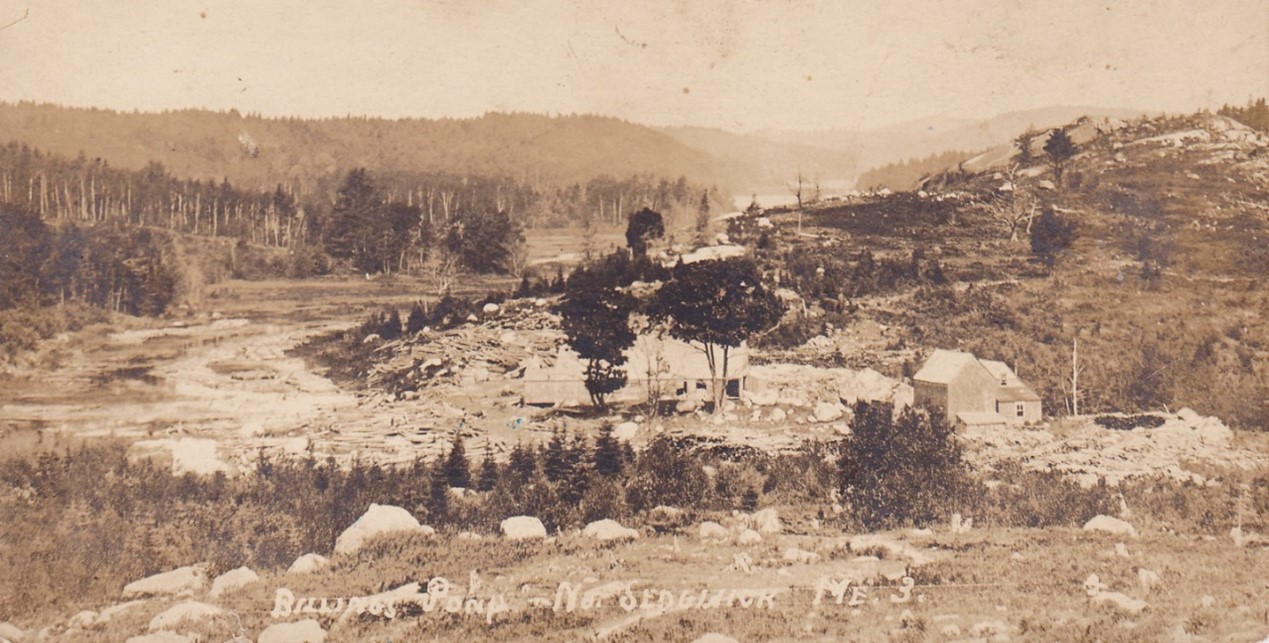Mills in Sedgwick (BUS.8)
Photos of and text about the mills in Sedgwick
Mills in Sedgwick
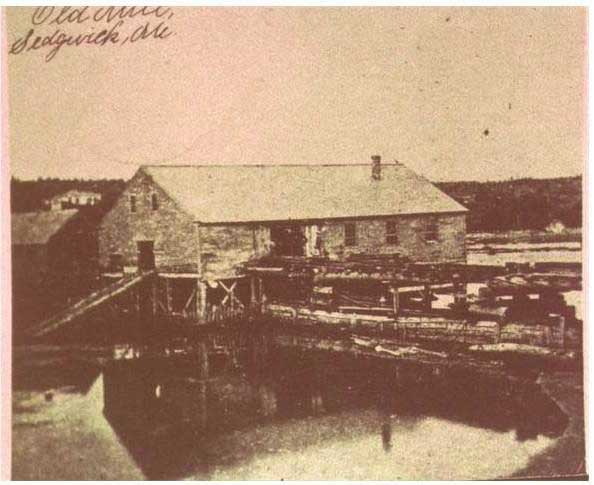
The Eaton mill on the Benjamin River at Sedgwick Village was powered by the changing tides. Today, at low tide, one can see a few of the foundation stones to the right of the bridge going toward Brooklin. The house on the left in the photo background is the David Carleton home, now the home of Jennifer and John Ellsworth.
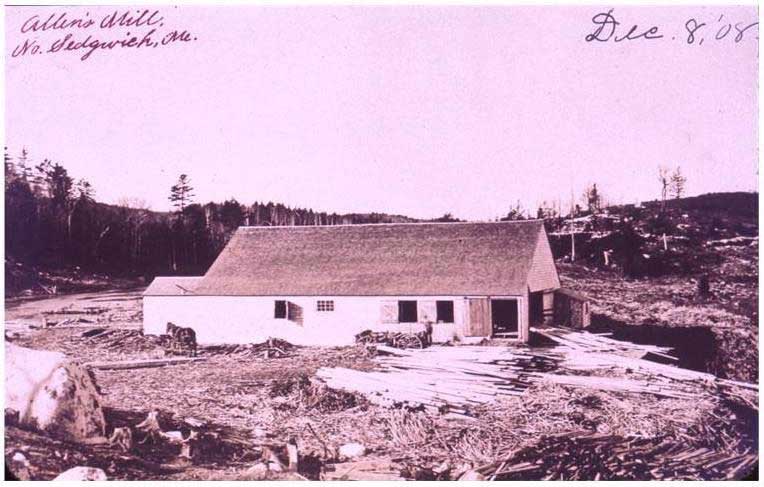
Allen’s lumber mill in North Sedgwick-1908. Originally it may have been John Thurston’s mill. In 2015 Bruce Grindal told Susan Webb that the mill was on Billings Pond, on Carleton Stream. The mill had a drop down saw that cut the lumber to specific lengths and a large stationary circular saw that cut the logs into the correct dimensions. The logs were pulled from the pond, loaded and dogged down to a carriage which carried them back and forth by the saw as it cut them to the desired size. The mill was originally driven by a water wheel but in Bruce’s time it had a diesel engine. Bruce remembers jumping on, and sometimes missing, the logs that were in the pond in front of the mill.
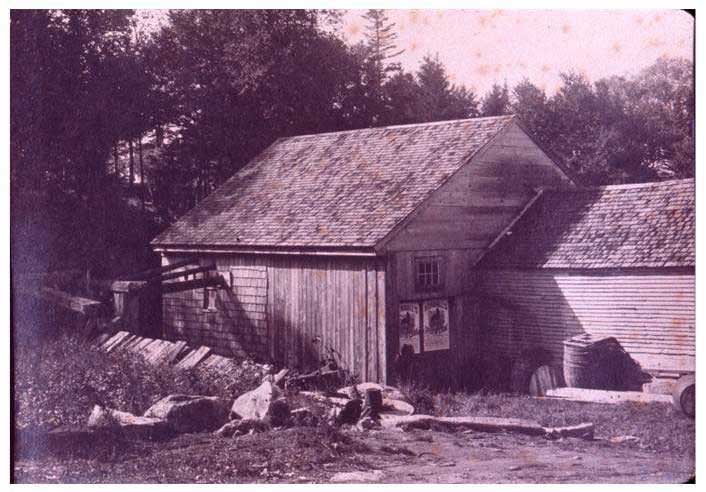
This is thought to be a photo of the grist mill behind Sargent’s Store in Sargentville. An 1892 deed from Wyer Sargent to Henry Sargent (368/123) refers to it as the “Eaton Mill”.
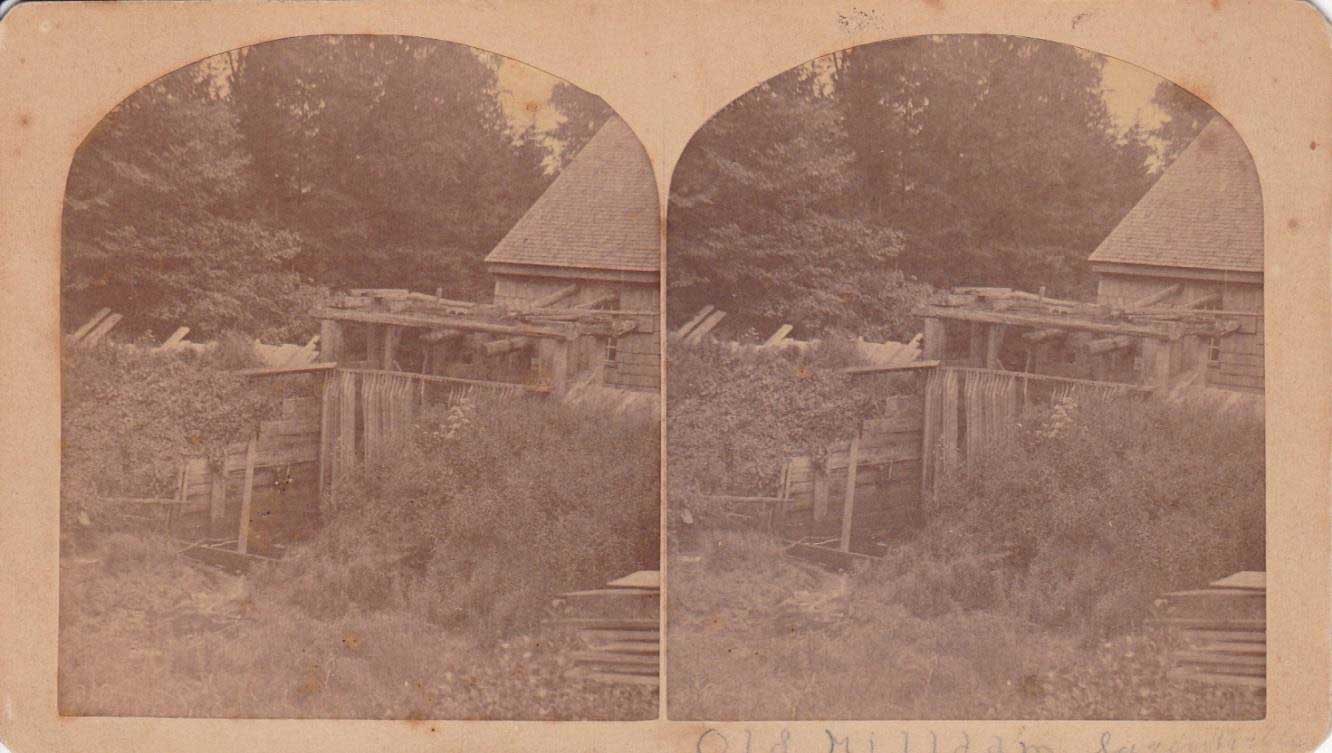
“The old mill at Sargentville” is written on the back of this photo. It appears to be another view of the same building in the picture above. Still standing (in 2014) on Shore Road is a yellow building owned by the Marston family and called the Grain Building. To the right of the building is evidence of the grist mill foundation and to the right are the remains of the dam which powered the mill.
There were other mills in Sedgwick and Sargentville but most were not photographed and are gone. For example, on a hand-drawn map created circa 1908-1910 by Martha Maria Currier (later Martha Simmons) the notation “Mr. Cummings mill” is written in at the site of the Sargentville Mill Pond. A review of documents revealed that in that time frame a Mr. Elmer E. Cummings of Portland, Maine frequently leased woodland in the Sedgwick area and brought in a “saw mill” to process the timber on those lots. As might be expected, there is no physical evidence of this temporary mill.
Too, in the early 1800s, there was a carding mill at the head of this same mill pond operated by Enoch Briggs, who is said to have had his residence in the same place. When Enoch died in 1843 his estate, which included carding mill equipment, was auctioned off and the mill ceased to exist.1 A few remnants of the mill race exist today.
Major David Carleton is known to have had a mill in North Sedgwick, though the site is uncertain, and Bruce Grindal said there were remnants of a mill down by the brook on Hale’s Hill Road.
_______________________________
1 Maine, Wills and Probate Records, 1584-1999, Enoch Briggs, Case Number 1776, 1843.

